- Home
- Vladimir Nabokov
Vladimir Nabokov: Selected Letters 1940-1977
Vladimir Nabokov: Selected Letters 1940-1977 Read online
Table of Contents
Title Page
Table of Contents
Copyright
Acknowledgments
Introduction
Editorial Note
Chronology
LETTERS WRITTEN IN GERMANY AND FRANCE 1923–1939
PHOTOGRAPHS
LETTERS 1940–1977
Index
Endpapers
About the Author
Footnotes
HBJ
Copyright © 1989 by the Article 3 b Trust
Under the Will of Vladimir Nabokov.
Introduction © 1989 by Dmitri Nabokov.
All rights reserved.
No part of this publication may be reproduced or transmitted in any form or by any means, electronic or mechanical, including photocopy, recording, or any information storage and retrieval system, without permission in writing from the publisher.
For information about permission to reproduce selections from this book, write to Permissions, Houghton Mifflin Harcourt Publishing Company, 215 Park Avenue South, New York, New York 10003.
The Library of Congress has cataloged the print edition as follows:
Nabokov, Vladimir Vladimirovich, 1899–1977.
Vladimir Nabokov : selected letters, 1940–1977.
Includes index.
1. Nabokov, Vladimir Vladimirovich, 1899-1977—Correspondence. 2. Authors, Russian—20th century—Correspondence. 3. Authors, American—20th century—Correspondence. I. Nabokov, Dmitri. II. Bruccoli, Matthew Joseph, 1931– III. Title.
PG3476.N3Z48 1989 813'.54 [B] 88-26793
ISBN 0-15-164190-0
eISBN 978-0-544-10655-0
v1.1012
Acknowledgments
Acknowledgment is made for the generous assistance of the following institutions and individuals: Bryn Mawr College Library; Cornell University Libraries; Harvard University Libraries; Hoover Institution on War, Revolution and Peace; The Library of Congress; Thomas Cooper Library, University of South Carolina, Interlibrary Loan: Daniel Boice, Yvonne Andrews, Cathie Gottlieb; Roger Angell; Alfred Appel, Jr.; Alison M. K. Bishop; Paul Carlton; Graham Greene; Alison Bishop Jolly; Pat Hitchcock O'Connell; Gina Peterman; Lord Weidenfeld. Prof. Brian Boyd generously volunteered to read this volume in typescript.
Introduction
Dmitri Nabokov
I have always had a number of parts lined up in case the muse failed. A lepidopterist exploring fabulous jungles came first. Then there was the chess grand master, then the tennis ace with an unreturnable service, then the goalie saving a historical shot, and finally, finally, the author of a pile of unknown writings —Pale Fire, Lolita, Ada—that my heirs discover and publish.
VLADIMIR NABOKOV, 1977 BBC interview
...turning to the title-page butterfly, its head is that of a small tortoise, and its pattern that of a common Cabbage White butterfly (whereas the insect in my poem is clearly described as belonging to a group of small blue butterflies with dotted undersides), which is as meaningless ... as would be a picture of a tuna fish on the jacket of Moby Dick. I want to be quite clear and frank: I have nothing against stylization, but I do object to stylized ignorance.
VLADIMIR NABOKOV, 1959 letter to publisher
I do have a story for you—but it is still in my head; quite complete, however; ready to emerge; the pattern showing through the wingcases of the pupa.
VLADIMIR NABOKOV, 1946 letter to Katharine A. White
To give credits where credits are due, I express my gratitude to friends and scholars for providing missing letters; to William Jovanovich and Julian Muller of Harcourt Brace Jovanovich for their patience during what was a long and sometimes fitful gestation; and, above all, to Matthew Bruccoli, not only for his valuable collaboration, but also for his gentle encouragement and outward calm as deadlines passed like telegraph poles glimpsed from a speeding train.
Procrastination, however, can bear unexpected fruit. Thus, the appearance of this volume coincides felicitously with a kind of worldwide Nabokov renaissance. Editions ranging from the substantial to the complete are appearing in unprecedented abundance. Of special note abroad are the uniform Rowohlt series in Germany, the Anagrama books in Spain, Guanda's semi-annual cadence for some sixteen volumes together with Bompiani's projected plump two-volume Classici in Italy, and the Rivages editions and the forthcoming Pléiade in France. Russian versions of Nabokov's works—including various translations from his English—are proliferating. Here we have two basic categories: the meticulously prepared Collected Works in progress at Ardis of Ann Arbor (a product, as literature is called these days, of guaranteed fidelity) on one hand, and, on the other, the results of a Soviet rush to get Nabokov into print while glasnost' and paper supplies last. This second product varies wildly. There is a handful of refined, courageous scholars (one in particular) struggling for accuracy; there are well-meaning but shoddy reprints from whatever sources were available; there are some pretty awful translations from the English; and, alas for glasnost', we see from the 1988 publication of Dar [The Gift], that the claws of political censorship are but half-clipped.
In Nabokov's adopted country there is good news indeed. Nearly all his fictional works are being assembled under the roomy roof of a new publisher, and an extensive, well produced, and properly distributed American Nabokov should soon be available.
The letters included in this volume represent only a small part of Nabokov's correspondence. They have been selected with certain general criteria in mind, and most of them reflect one or more of the following facets of Nabokov:
his evolution as a writer and insights into his creative process
his academic activity
his passions: lepidoptera and chess
certain important details of his life
his family relationships
his artistic and personal morality
the humor and originality with which he composed everything from a grocery list or the dressing-down of a derailed biographer to letters of importance regarding family or artistic matters.
The above are not dry scholastic categories, but themes that will fascinate the reader as they develop with the intricacy, symmetry, and suspense of a multifaceted novel by Nabokov. And Lolita's incredible adventures alone could be a novel.
When he was preparing his books for publication, Nabokov's occasional absent-mindedness during the physical process of writing was counterbalanced by microscopic attention to detail at the text's crucial stages: the exactitude of thought and often the research that creation entailed during the work's conception, and a final check of every word in proof. In the interim, the "passion of the scientist" could propel him past a lapse, but the "precision of the artist" compelled him to return eventually and fix that lapse. The occasional typo or other error will, of course, haunt the most carefully checked text, but Nabokov did all he could to forestall such mishaps, and a sampling of his corrections, particularly those to the proofs of the first edition of Lolita, is included to illustrate the meticulous care he gave a nascent work.
The preparation of these lists for the present volume meant, in effect, retracing every detail of Nabokov's 1955 revisions, to be certain that the ghosts of typos and rejects, as well as the author's emendations, had been properly resurrected.
Such attentive checking of Nabokov texts yields welcome by-products. One is reminded, for instance, that, no matter how many times one rereads his works, there is always some previously undiscovered surprise. Take the encounter with Rita described at the beginning of Chapter 26, Part Two, of Lolita. The episode is not a crucial element of the book, and the casual reader might tend t
o gloss over it. That would be a pity:
She was twice Lolita's age and three quarters of mine: a very slight, dark-haired, pale-skinned adult, weighing a hundred and five pounds, with charmingly asymmetrical eyes, an angular, rapidly sketched profile, and a most appealing ensellure to her supple back—I think she had some Spanish or Babylonian blood. I picked her up one depraved May evening somewhere between Montreal and New York, or more narrowly, between Toylestown and Blake, at a darkishly burning bar under the sign of the Tigermoth, where she was amiably drunk: she insisted we had gone to school together, and she placed her trembling little hand on my ape paw.
The "Babylonian blood," the "asymmetrical eyes," the "rapidly sketched profile" are really not sketchy at all; they create a more specific sensation of everything about the girl than a page of toiled-over particulars. And Toylestown and Blake, and the "darkishly burning bar" (its name perhaps adjusted by Humbert for the image's sake) with its namesakes whirling and thumping about the neon sign, and the "depraved May evening" itself —that is original writing, where the concentrated image rules, where style and substance merge, as they should, to give the reader an agreeable spinal chill. Little pitfalls lurk, it is true, for the avid analyst with his deconstructionist lingo. Sometimes things are exactly what they seem; I think it is safe to say, for instance, that Humbert's "ape paw" has nothing to do with the animal laboring over a charcoal drawing in the author's afterword to Lolita, although someone's printout may dispute me. Then someone else, after more research, may conclude that the newspaper account cited by Nabokov as his inspiration for the book's theme never existed at all, and that the artistic animal was placed in the cage whose bars it is reproducing simply to enchant the unwary symbol-hunter.
The point, however, is the image, the "feel" one gets from the combination "ape paw," and how that combination came to be. The process went more or less like this: Nabokov had lived with the image, the "undeveloped film" as he once described it to me, for a long time. An embyronic Humbert was already waiting in the wings of The Gift (published in serial form as Dar in 1937–38) to be written into a book that one of the novel's characters was contemplating. This hairy, apelike quality embodied to Nabokov both the grotesqueness and the pathos of the monstrous character that already lived within his artistic womb. A kind of Humbert, complete with those traits, came to life when the "film" was partially developed to yield The Enchanter (Volshebnik, written in 1939, not published until the posthumous French and English-language editions of 1986). When drafting Lolita Nabokov may have considered "apelike," even "simian." He may have considered a repetition of "hand," or even "arm." Yet he chose more simple, direct, and vivid words. In reply to a question much favored by interviewers, Nabokov would say that he thought in images rather than in any specific language. Nevertheless—and it is especially easy to find examples in the letters, particularly in the 1940s and early 1950s—he was still, at some level of consciousness, translating some images and locutions from their Russian (and occasionally their French) formulation. Not the meticulously studied strata of Americana amid which Lolita was finally set, but elements of the book, for instance, that had existed in his mind when he still had no idea he would one day become an American writer. Thus he instinctively ended up with the words "ape" and "paw"—but he wrote "ape's paw" and not "ape paw," for that felt somehow closer to the cozy Russian combination obezyanya lapa which he had long associated with the character. And only when he was correcting proofs (corrections list, 9 July 1955, 372:11)—the last chance, as it were, before the still adjustable creation in one's mind congeals into its first concrete form—did he reduce it to "ape," thereby avoiding the awkward and ambiguous double possessive "my ape's paw."
This peek through the magnifying glass is but one illustration of the infinitely diligent attention to detail that must accompany creative genius in order to produce a paragraph so concentrated and evocative, yet superficially so straightforward as the one cited above. And then, as one makes last-minute emendations to the proof of this very page, one's imagination is suddenly drawn through the magnifying glass into the looking glass. One pictures a future editor or scholar hunched, with his own lens, over a page of proofs that reproduce the corrections made by Vladimir Nabokov to the proofs of the Olympia Lolita, as corrected by Dmitri Nabokov for Vladimir Nabokov: Letters, 1940–1977, and destined for inclusion, say, in Letters About Vladimir Nabokov, 1977–2001. And, like the future selves of the astronaut in 2001 and the future kings in Macbeth, other editors and scholars loom, dimly reflected in the background of one's fantasy, as the looking glass multiplies into an infinite hall of mirrors, and time and place are neatly blurred into the timeless, placeless dream dimension that transpires, here and there, through the texture of the original Nabokov's texts.
At first, the present collection was to be limited, linguistically, to letters written in English and, chronologically, to those written after Nabokov came to America in 1940. It was subsequently decided to expand those parameters somewhat, both in order to set the stage for the American period, and to bring Nabokov's personal facets into sharper focus. Correspondence with members of the family and with other Russians was, except where noted, conducted in Russian. The English translations of these letters and of the occasional letter in French are by Dmitri Nabokov in collaboration with Véra Nabokov. Where there might have been doubt in the reader's mind as to the language used for an entire letter or for an individual expression, explanatory notes appear.
The Nabokov Archive has yielded such a wealth of material that at least one further volume is planned. It will include correspondence between Nabokov and émigré literary figures, his parents, and his wife, categories which are represented by only a few examples in the present collection.
Nabokov sometimes transliterated Russian letters into English characters simply to humor the faithful Royal typewriter that accompanied the family on travels across America and Europe. In other cases he did it for fun, as in a letter to his sister of 26 November 1967 that contains jocular Russian transliterations of Elena Sikorski's presumed jocular French pronunciation. Rendering such multilingual nuance in a manner comprehensible to the reader who might know neither Russian nor French was tricky. So was translating the little poem Nabokov wrote on a postcard to his sister in September, 1970, and the illustrations of Russian prosody, camouflaged in matter-of-fact sentences, that he sent to his brother Kirill in 1930. In such cases I have tried to provide English equivalents that preserve both sense and form, and prefer not to think of what will happen when translations into other tongues start rolling in. And it would not surprise me if some Soviet translator, without consulting us, were to attempt reconverting into Russian the letters that have been painstakingly Englished, for this has already happened with at least one Nabokov poem.
Transliteration is a thorny matter. I have followed the method set forth by Nabokov in his translation of Eugene Onegin(1964), but have done so somewhat nonexclusively. Generally accepted spellings of well-known names, titles, etc., have been left undisturbed. Nabokov's own usages varied widely over the years, and have not been altered. But enough gray areas remain—Nikolai Gogol, which in his "author's copy," VN retitled Nikolay Gogol; "Chernyshevski" in the English version of The Gift who, according to the rules, ought to be spelled "Chernishevski"; other cases where several factors must be considered—to make consistency elusive. The Russian ii and bl are particularly slippery characters, and no amount of revision seems to make y, ï, i, etc. represent them with total discipline.
With a couple of exceptions the letters from Nabokov to his sister Elena and to his brother Kirill are among those published in Russian under the title Perepiska s sestroy(Ann Arbor: Ardis, 1985). The correspondence with Edmund Wilson has been separately published as The Nabokov-Wilson Letters, ed. Simon Karlinsky (New York: Harper & Row, 1979).
There was often a reciprocal epistolary collaboration between Vladimir and Véra Nabokov. On occasion he would indicate the gist of a letter to be written, his wif
e would compose part or all of the text, and he would sign it. On other occasions he preferred, for one reason or another, that she sign a letter in which every word was his. Véra Nabokov was, among other things, her husband's typist for many years. By the late 1960s the escalation of correspondence and other matters made a secretary indispensable. Jacqueline Callier was engaged and has been of great assistance to the Nabokovs ever since. Russian-language typing has, over the years, been done almost exclusively by Véra Nabokov and Elena Sikorski.
Nabokov generally sacrificed most other pursuits to the pursuit of his art. When he did take the time to write letters, the stimuli were family ties, close friendship, and aesthetic, professional, or scientific matters that required the authority of his signature. He replied to critics only when his artistic or personal integrity was questioned. He wrote to newspapers and magazines on those rare occasions when an important matter of fact or of morality needed to be set right. He was moved by the letters of certain fans, but felt he could not sacrifice writing time to embark upon exchanges with them, and only seldom did he find some exceptional quality in a fan letter that caused him to break this rule. Among the most touching letters were those in which the return address had been deliberately omitted to make it clear that neither the author's time nor his signature was being solicited; I recall one in particular, signed "a little Nabokov." Then again, the whims of fate and filing caused the loss of a few special letters that had been set aside for reply, and no other trace of name or address remained. An exceptional letter from Israel, received and hopelessly misplaced many years ago, was one of those that caused Nabokov special chagrin.

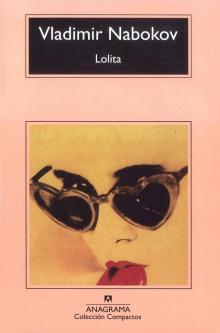 Lolita
Lolita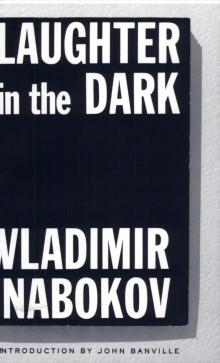 Laughter in the Dark
Laughter in the Dark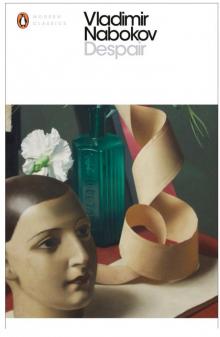 Despair
Despair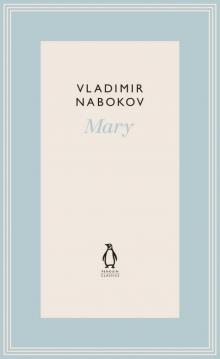 Mary
Mary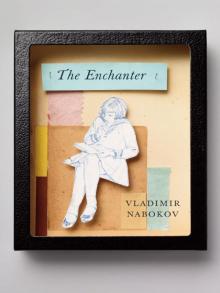 The Enchanter
The Enchanter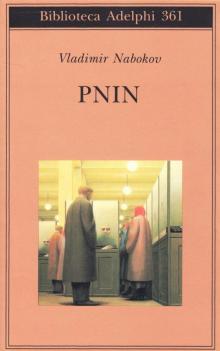 Pnin
Pnin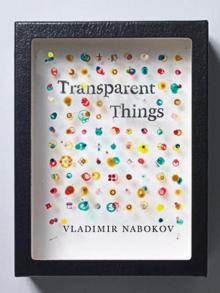 Transparent Things
Transparent Things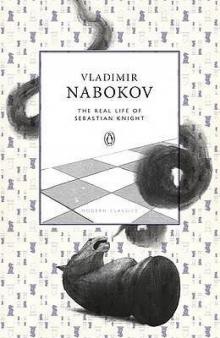 The Real Life of Sebastian Knight
The Real Life of Sebastian Knight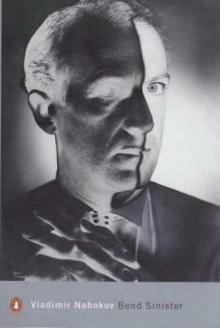 Bend Sinister
Bend Sinister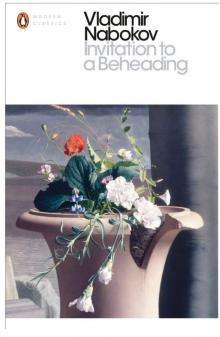 Invitation to a Beheading
Invitation to a Beheading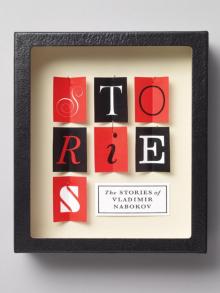 The Stories of Vladimir Nabokov
The Stories of Vladimir Nabokov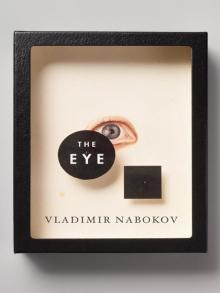 The Eye
The Eye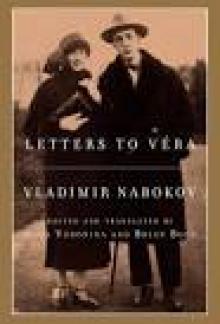 Letters to Véra
Letters to Véra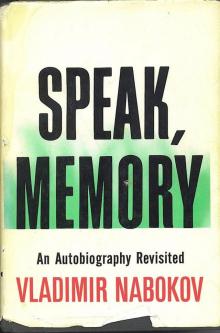 Speak, Memory
Speak, Memory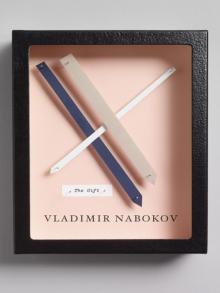 The Gift
The Gift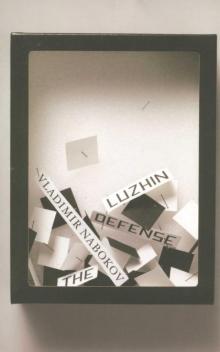 The Luzhin Defense
The Luzhin Defense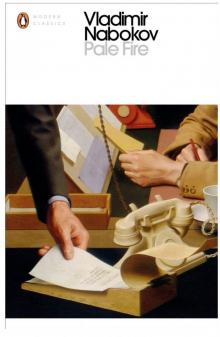 Pale Fire
Pale Fire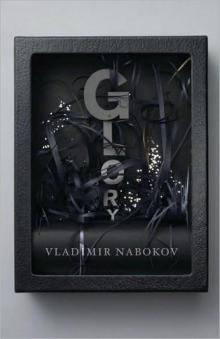 Glory
Glory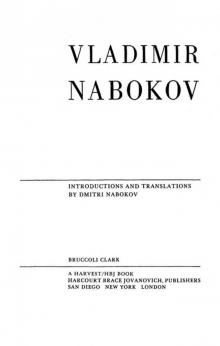 Man From the USSR & Other Plays
Man From the USSR & Other Plays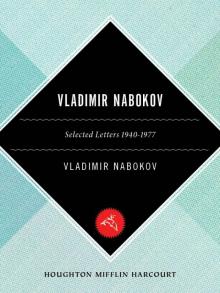 Vladimir Nabokov: Selected Letters 1940-1977
Vladimir Nabokov: Selected Letters 1940-1977 Strong opinions
Strong opinions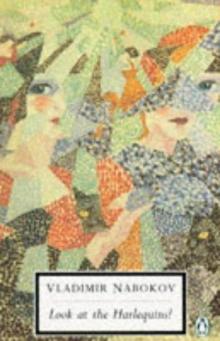 Look at the Harlequins!
Look at the Harlequins!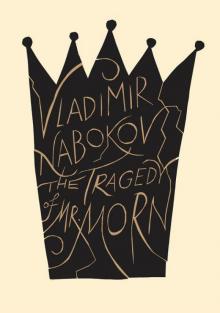 The Tragedy of Mister Morn
The Tragedy of Mister Morn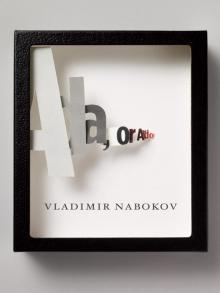 Ada, or Ardor
Ada, or Ardor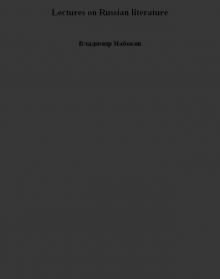 Lectures on Russian literature
Lectures on Russian literature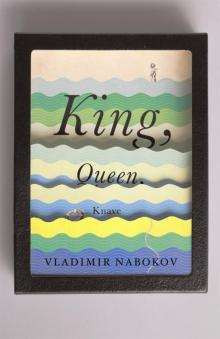 King, Queen, Knave
King, Queen, Knave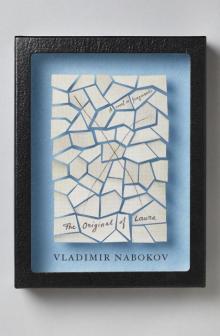 The Original of Laura
The Original of Laura